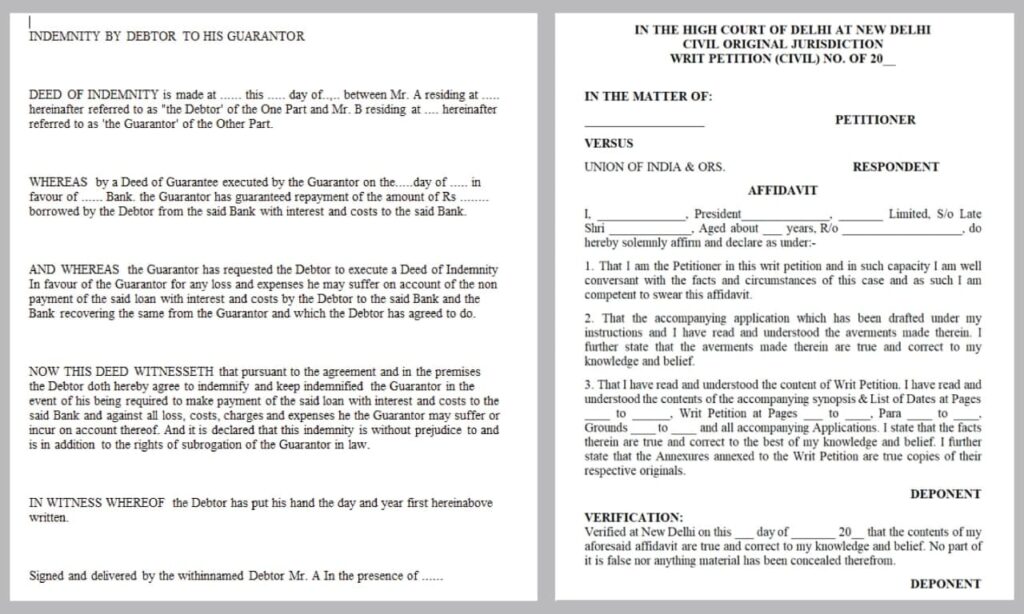Mastering the Art of Drafting: A Comprehensive Guide to Format
Introduction:
For professionals in a variety of disciplines, including law, commerce, academia, and creative writing, drafting is a crucial talent. In order to communicate concepts, arrange information, and create a logical and structured work, the drafting format is essential. In this post, we’ll examine practical methods to improve your drafting abilities as well as the essential components of drafting format.

Understanding the objective: It’s important to determine the objective of your paper before beginning any drafting efforts. Are you writing a research paper, a marketing proposal, or a legal contract? Every type of document has specific formatting needs that should match its intended use.
Organising your Paper: a. Title and Header Start your document with a title that sums up your work in a clear, straightforward manner. Include a header with key details like the document’s version, the date, and the author’s name.

Collection of 10000+ Legal Drafts, Legal Notices, Pleadings, etc. All the Drafts are 100% ACCURATE and EDITABLE as per your requirement.
Table of Contents: For longer texts, a table of contents makes it easier for readers to find specific sections of interest. Section headings, page numbers, and any applicable subsections should be included.
Art of Drafting :
Introduction: Give a succinct summary of your paper in which you describe its goal and what the reader can anticipate to find there. The context for your document’s main content is established in this section.
Main Body: This section contains the majority of your information. Create logical sections for your text and use headings and subheadings to establish a distinct structure. Each segment should concentrate on a distinct theme or topic and flow naturally into the following.
Conclusion: Reiterate your core arguments or suggestions while summarizing the major themes covered in your paper. A strong finish leaves the reader with a positive impression.
Appendices (if applicable): Include supplemental information that supports your main content, such as charts, graphs, or more data. Each appendix should be clearly labelled and properly cited in the document’s main body.
Formatting recommendations: a. typeface and Size: Pick a reputable typeface (such as Arial or Times New Roman) and use it consistently throughout the page. For the main body text, use a legible font size, usually between 10 and 12 points. To set them out from the body content, headings and subheadings should be larger and bold.
Margins and Spacing: To ensure reading, leave adequate margins on all sides of the document. Block quotes, footnotes, and tables can all be formatted with single spacing, although the main body text is often double spaced.
Paragraphs and Indentation: Depending on the desired style manual, start each paragraph with an indentation or a line break. This improves readability by graphically separating topics.
Numbering and Bullet Points: Use numbering or bullet points to improve clarity when presenting lists or sequential information. Make sure these items are formatted consistently throughout the entire document.
Citations and References: Use the correct citation style (for example, APA, MLA, or Chicago) when referring outside sources or quoting research. Correct citations give your work authority and help you stay away from plagiarism problems.
Enhancements to the visual presentation: a. Headings and Subheadings: Use clear, useful headings to direct the reader and divide difficult information into manageable chunks. To establish a distinct hierarchy, think about employing multiple levels of headings.
Tables and Graphs: If your document presents data, include tables or graphs to make the content more aesthetically pleasing and understandable. Make sure they are identified correctly and mentioned in the main text.
Bold and Italics: When highlighting crucial terms or ideas, use these formatting options sparingly. However, refrain from using it excessively as it might divert the reader.
Fonts and Colours: Use a small number of fonts and only a few colours. Use colour primarily for headings, titles, or to emphasize key areas to maintain a professional image.
Conclusion:
Understanding your document’s goal, organizing it well, and adhering to the proper formatting rules are all essential to mastering the art of drafting. You may make papers that are clearly organized, visually beautiful, and simple to understand by using these essential components. Always keep in mind that a well-written document demonstrates your professionalism and attention to detail in addition to effectively communicating your point.
